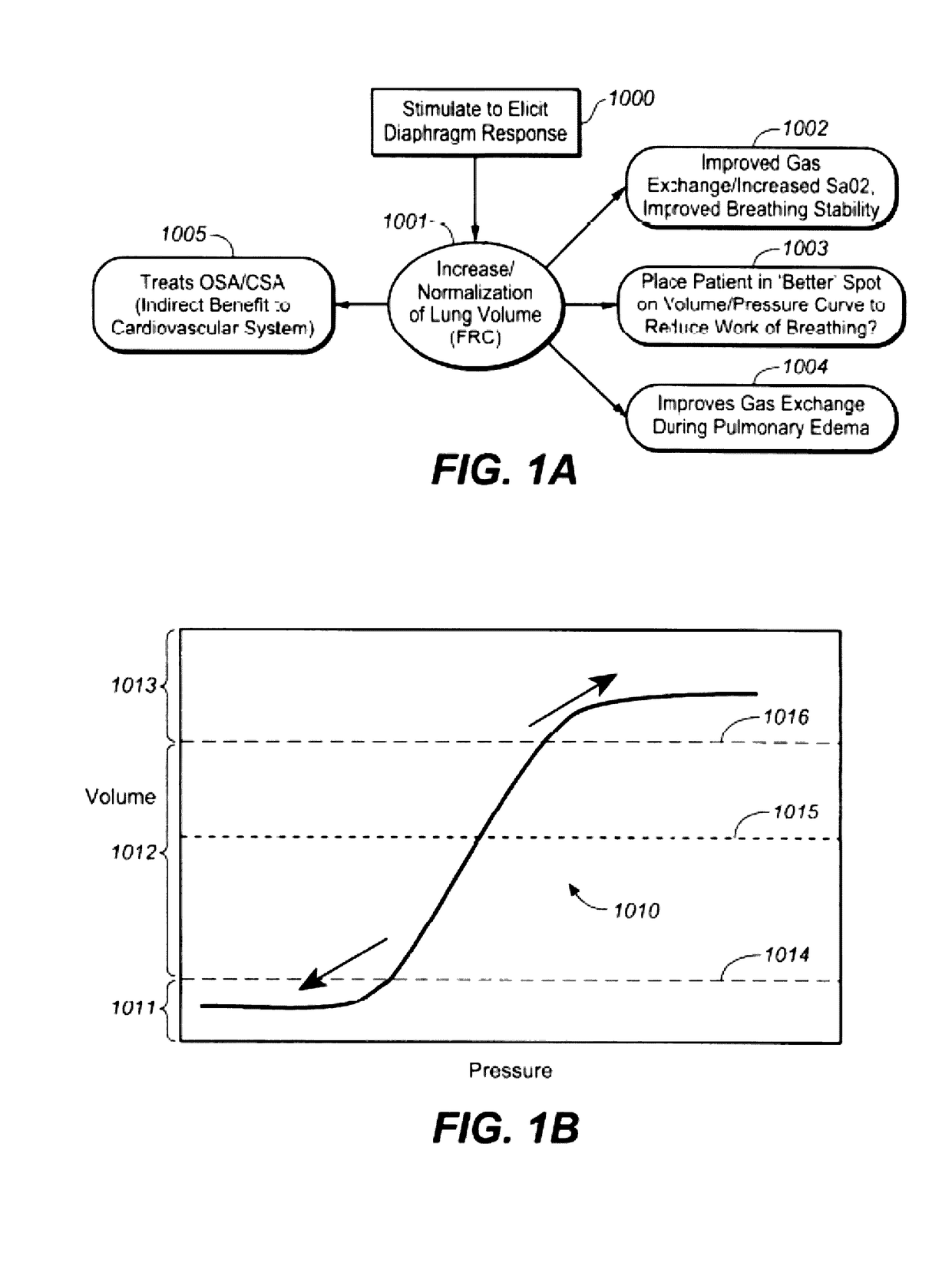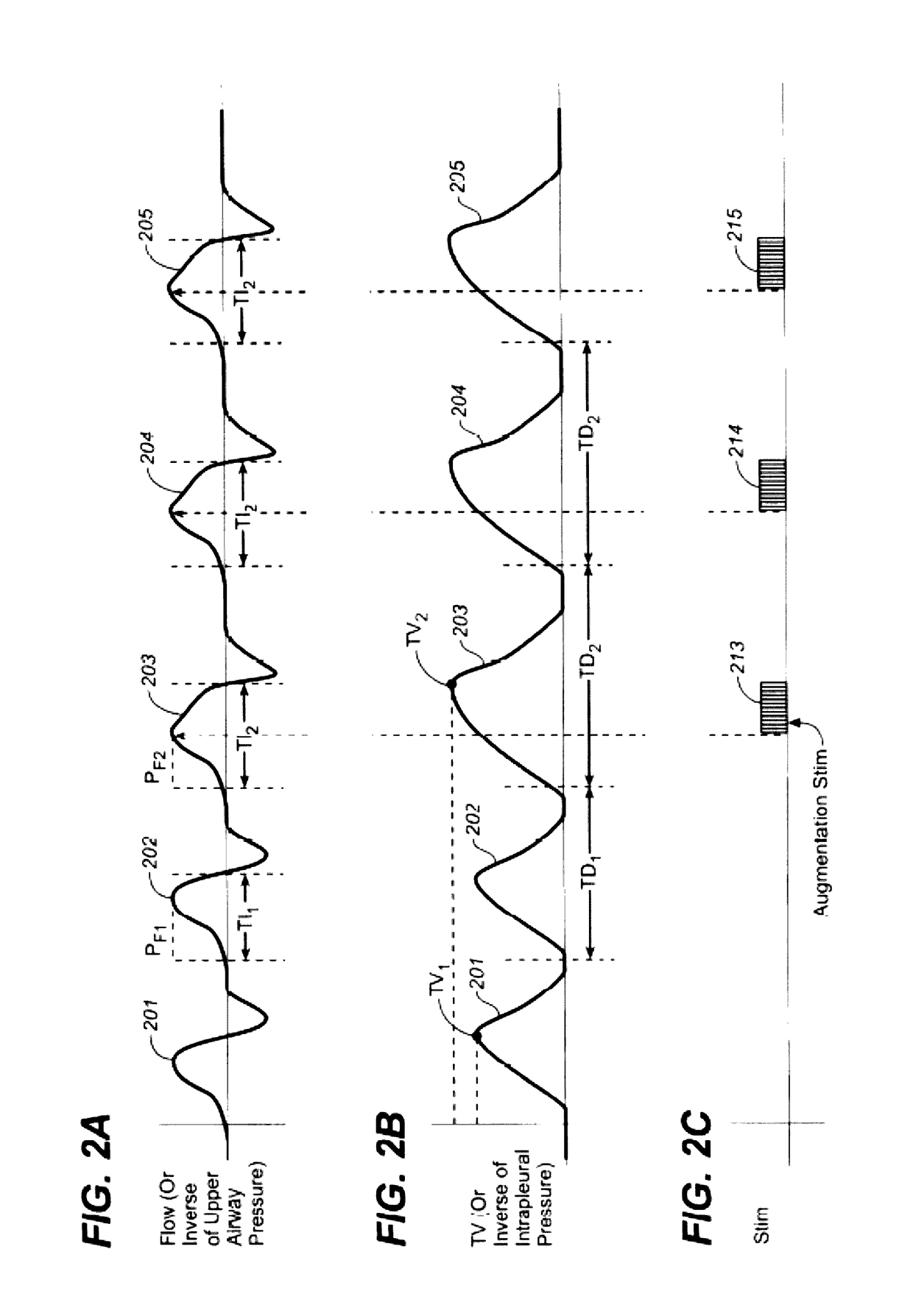Devices and methods for reducing intrathoracic pressure
a technology of intrathoracic pressure and devices, applied in the field of heart failure treatment, can solve the problems of more than half of heart failure patients dying, the disease progresses, and the disease cannot be cur
- Summary
- Abstract
- Description
- Claims
- Application Information
AI Technical Summary
Benefits of technology
Problems solved by technology
Method used
Image
Examples
Embodiment Construction
[0065]In accordance with one aspect of the invention, stimulation to elicit a diaphragm response is provided to increase or normalize lung volume and in particular to increase functional residual capacity. It is believed that stimulation to increase or to normalize lung volume or functional residual capacity may have one or more effects that may be therapeutic to cardiovascular or heart failure patients.
[0066]In accordance with this aspect of the invention stimulation may be provided using a device or method as described in one or more of the related patent applications set forth herein, to increase or normalize lung volume or functional residual capacity. For example, a bias stimulation may be provided to increase functional residual capacity or to bias lung volume for a period of time. It is believed that increasing functional residual capacity may have one or more therapeutic effects for heart failure or other cardiovascular patients, such as, for example, reducing effort require...
PUM
 Login to View More
Login to View More Abstract
Description
Claims
Application Information
 Login to View More
Login to View More - R&D
- Intellectual Property
- Life Sciences
- Materials
- Tech Scout
- Unparalleled Data Quality
- Higher Quality Content
- 60% Fewer Hallucinations
Browse by: Latest US Patents, China's latest patents, Technical Efficacy Thesaurus, Application Domain, Technology Topic, Popular Technical Reports.
© 2025 PatSnap. All rights reserved.Legal|Privacy policy|Modern Slavery Act Transparency Statement|Sitemap|About US| Contact US: help@patsnap.com



